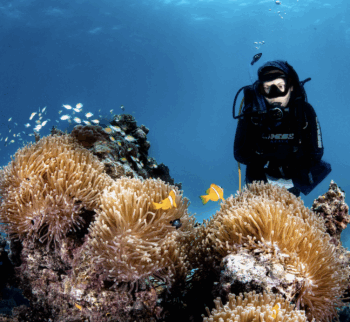As by KAUST news:
Riyadh – During the Middle East and North Africa (MENA) Climate Week, a landmark report was unveiled, bringing to light the challenges that Saudi Arabia might face in a 3°C warmer world. This 130-page report was developed from a collaborative effort between King Abdullah University of Science and Technology (KAUST), AEON Collective and King Abdullah Petroleum Studies and Research Center (KAPSARC).
The report highlights the stark reality that Saudi Arabia is witnessing climate change at an accelerated pace compared to other regions. The global average temperature is potentially on track to rise by nearly 3°C by the end of this century (relative to the pre-industrial period of 1850–1900). Yet, the MENA region, including Saudi Arabia, could experience that change much sooner. The exact outcome depends strongly on the specific socio-economic and emissions scenario, emphasizing the important relationship between policy choices, socio-economic growth, and climate change. Under the most extreme scenario, temperatures in the Arabian Peninsula could rise by 5.6°C by the end of the century.
Prof. Matthew McCabe of KAUST, who acted as the coordinating editor, highlighted the need for this assessment, “The climate futures report fills a major gap, offering a comprehensive overview of the interlinked and cascading consequences that climate change will have on different sectors in Saudi society — including the degradation of natural ecosystems, the increasing stress on urban environments, and the direct impacts on human health.”
Princess Mashael AlShalan from AEON Collective, and one of the authors, added, “Climate change doesn’t only challenge our environment; it affects every facet of our lives — our health, food, water, as well as our economy. Our actions today will decide whether we can weather these challenges or face irreversible damages.”
Another author, Dr. Mohamad Hejazi from KAPSARC, added, “the report fills an important gap in our understanding of how climate change will impact the Saudi economy, which is a key prerequisite to further our understanding and guide our adaptation strategy.”
The report offers a comprehensive analysis of the ramifications of climate change on Saudi Arabia’s diverse habitats. Marine systems face significant stress, with phenomena like coral bleaching becoming more prevalent. Deserts might expand further, driven by irregular rainfall, increasing temperatures, and over-grazing, posing threats to native vegetation and wildlife. The impacts on human health will also become more pronounced. Meanwhile, deteriorating air quality exacerbates respiratory issues, and there’s a growing concern that climate change might lead to more favorable conditions for vector-borne diseases such as malaria and dengue.
However, the report stresses that many of the negative consequences of climate change can still be averted. Recent years have witnessed Saudi Arabia’s willingness to pursue transformational change, with the protection, preservation and restoration of natural capital a primary focus. Given its vast solar potential, commitment to economic diversification under Saudi Vision 2030, and its strategic importance in the global energy market, Saudi Arabia is uniquely positioned to become a global leader in climate change mitigation and adaptation.
For further details, the full report can be found here.
With this collaborative publication, KAUST contributes to achieving the UN SDG 13 – Climate Action – and SDG 17 – Partnership for the Goals as well as Saudi Arabia’s Vision 2030 objectives of improving livability in Saudi cities and ensuring environmental sustainability.




